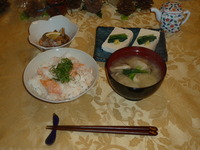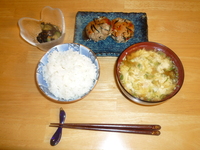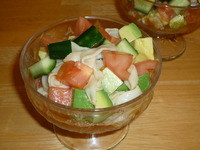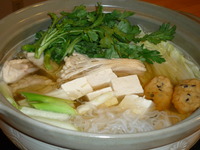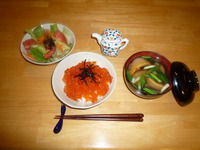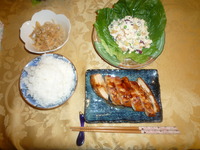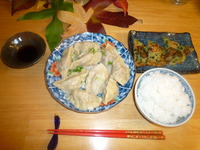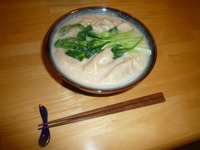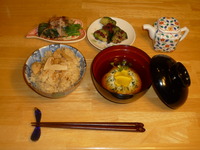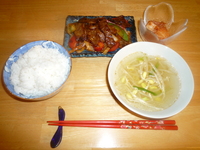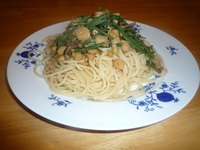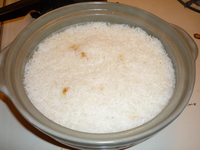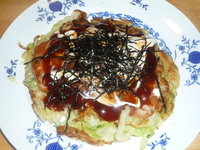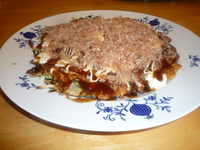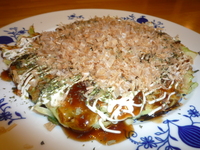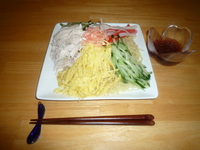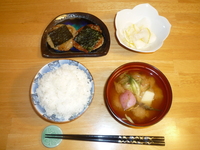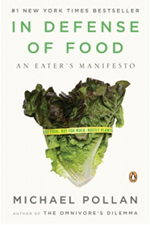Tuesday, May 18th, 2010
The process of akunuki is important in Japanese cooking, not only to preserve the flavor and color of vegetables, but also to help bring out the natural sweetness in vegetables.
Although the basic procedure for akunuki is to boil vegetables in water, there are many different types of procedures depending on the type of vegetable it is. The most common procedures are listed below:
1) Boiling in water and salt
Boil vegetables in a big pot of hot water with about a tablespoon of salt. (Prepare the water as if you are going to boil pasta) The length of time you boil the vegetable depends on the type of vegetable it is.
For green leafy vegetables such as spinach, shungiku (chrysanthemum leaves), fuki (leaves of bog rhubarb), one minute will do. Drain and immediate shock the leaves in cold water or ice water. This will make sure that the cooking stops and the leaves maintain their green leafy color.
2) Boiling in water for soup
If you're boiling different vegetables and meat together for a stew or soup such as curry or cream stew, you don't want to drain the soup water so you can scoop up the aku (brown foam) from the surface of the soup with a ladle.
3) Akunuki with nuka (ground rice bran)
Rice bran is effective in removing the bitterness in vegetables when boiling together with water. This is a common procedure to mitigate the bitterness in takenoko (bamboo shoots). After boiling, make sure to wash well since the rice bran can hide in the crevices of the bamboo.
4) Akunuki with togijiru (rice water left over from washing rice)
Togijiru is also used to remove bitterness from cooked vegetables. This is used on vegetables that don't have that much bitterness such as daikon.
5) Akunuki with ash
Ash for cooking is hard to come by unless you have a fire place and use wood that is not treated with chemicals. It is often used to treat vegetables with a high fiber content such as zenmai, warabi and fuki. Add a handful of ash to you pasta pot with a lot of water and boil for a few minutes.
6) Itazuri technique
This procedure also helps to mitigate the bitterness in vegetables such as fuki and cucumbers. Place a generous amount of salt on the vegetable and lightly press and roll the vegetable. This process also helps to peel off the fibrous skin on the fuki. At this point you can boil the fuki in boiling water and ash. If you don't have ash, you can use rice bran or even just salt.
7) Soaking in water and lemon or vinegar
Some vegetables will oxidize quickly and create a bitter flavor. Immediately after peeling, dropping them in a big bowl of water with a teaspoon of vinegar or lemon juice will help prevent this from happening. Examples include, gobo, potatoes renkon and chestnuts.
